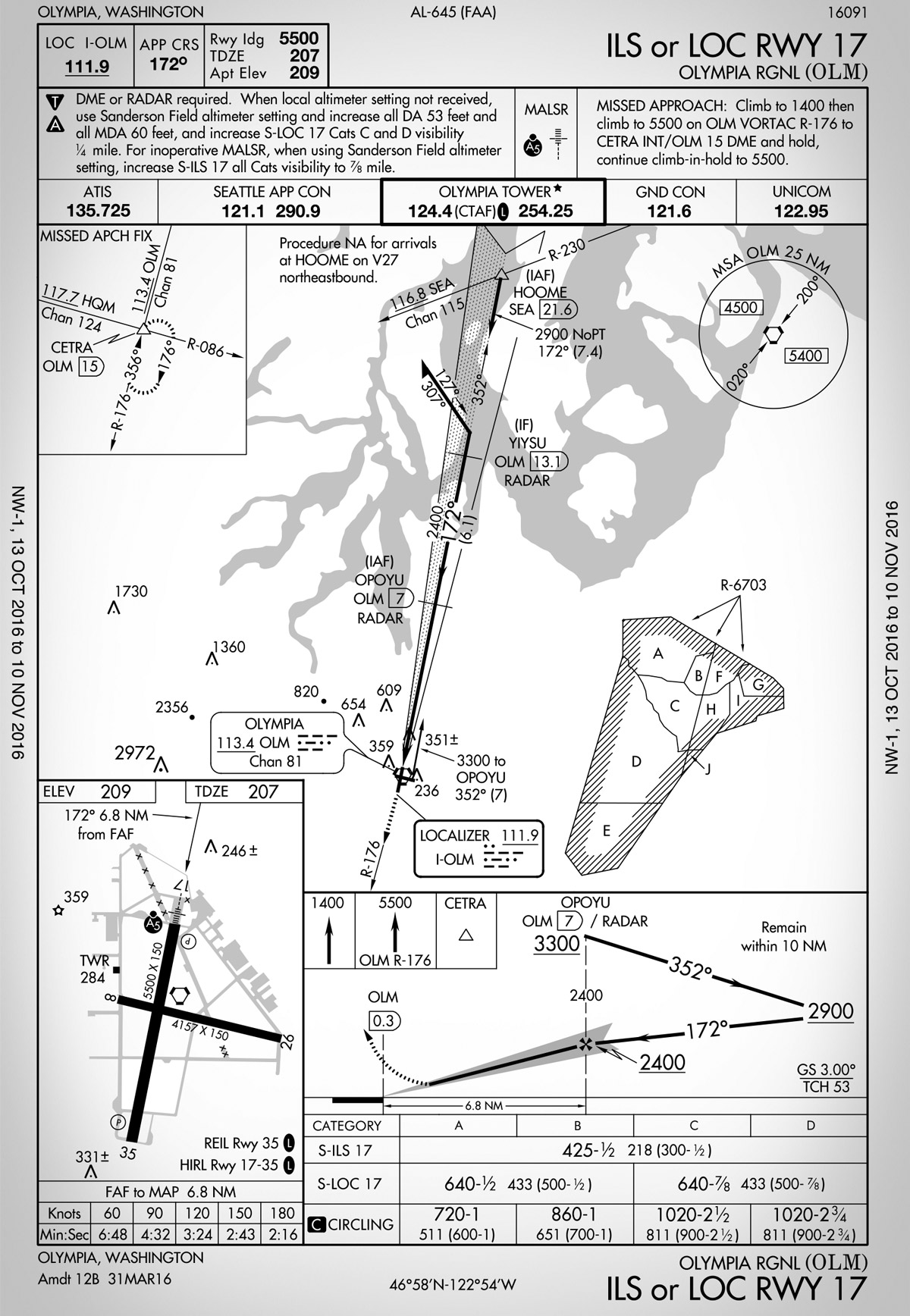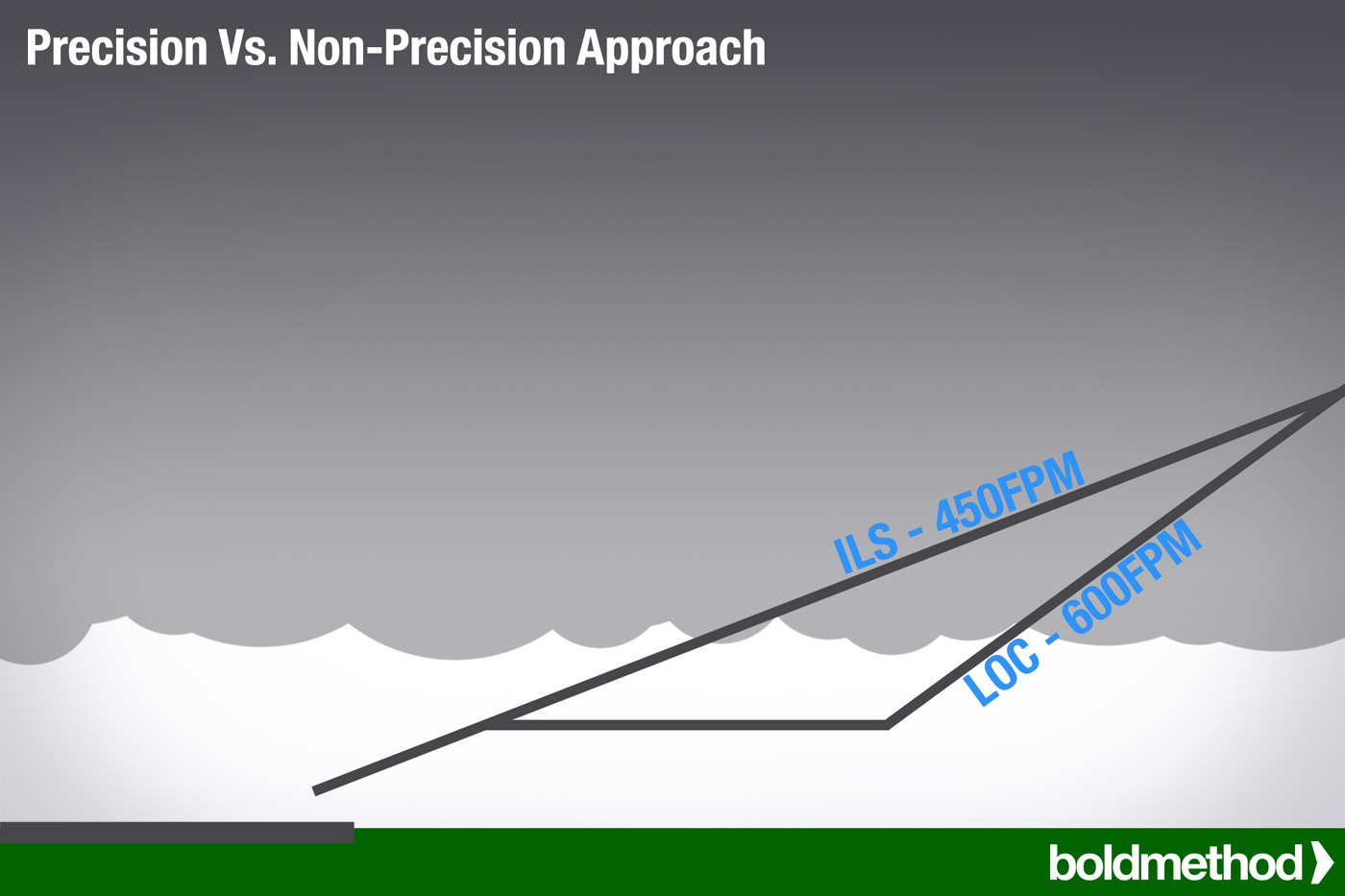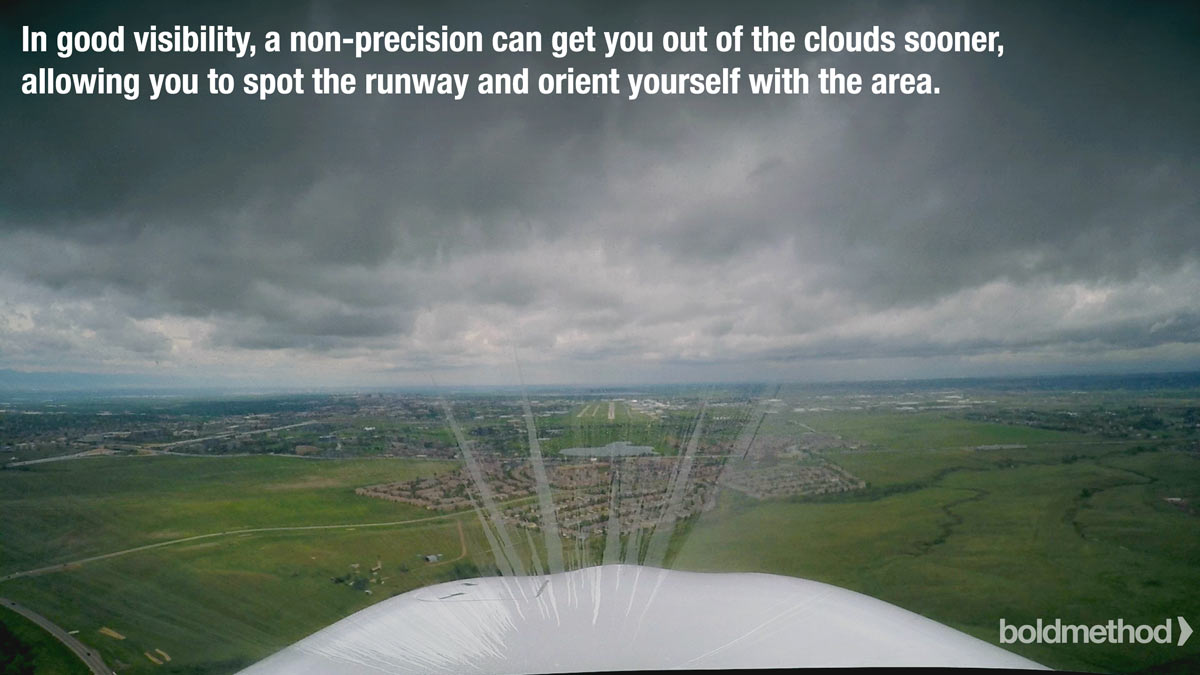
When you're picking an approach at your destination, you usually go for the precision approaches first. But is there ever a time when shooting a non-precision is better?
There can be, depending the ceiling, visibility, turbulence, ice, and how soon you want to get out of the clouds. But any time you choose a non-precision approach over a precision, you're also taking on more workload, and opening yourself up to the possibility of a mistake while descending on the approach.
Seeing The Runway Sooner
Let's look at this example in Olympia, WA. Runway 17 is in use. The visibility is 10SM, and the ceilings are overcast at 700'.
Looking at available approaches, the ILS to 17 is your first pick. But like most ILS approaches, you can also shoot a localizer only approach to runway 17 using this chart.

What's the difference? The ILS gets you down to 218' above touchdown, and the LOC, which is a non-precision approach, gets you down to 433' above touchdown.
Since the ceiling is 700' overcast, both approaches with get you out of the clouds with no problem. But if you fly a localizer only approach, it can get you out of the clouds sooner, depending on your descent rate. Why would you want to do that? It can give you more time to visually orient yourself with the runway and surrounding area. And if you're getting beat up by turbulence or picking up ice, it can give you, and your passengers, some added relief.
How Much Time Will You Spend In The Soup?
Let's start with the ILS to 17. If you're flying a 90 knot approach speed on a 3 degree glideslope, you'll need to descend at roughly 450 feet-per-minute (FPM) to maintain the glideslope.
There's a pretty easy rule-of-thumb to figure that descent rate out. Divide your ground speed by 2, then add a 0 to the end. So if you take 90 knots / 2, you get 45. Add a zero to the end, and you get 450 FPM.
On this approach, glide slope intercept is at 2400' MSL. Since TDZE is 207' MSL, that means you're roughly 2200' above the touchdown zone when you intercept glideslope. And since the ceilings are 700' overcast, you'll need to descend roughly 1500' before you break out of the clouds.
That means if you're descending at 450 FPM on the ILS, it will take you roughly 3 minutes and 20 seconds before you break out of the clouds.
What If You Fly The LOC Only?
Now lets look at the LOC only approach. You know that the MDA of 640' MSL (433' above TDZE) is still easily going to get you out of the clouds. And if you increase your descent rate even slightly, it can get you out of the clouds sooner.
When you cross the FAF, if you start a descent at 600 FPM, which is still a very reasonable descent rate, it will take you about 2 minutes and 30 seconds before you break out of the clouds. That's 50 seconds sooner than shooting the ILS.


Making The Best Choice For Your Approach
In almost all cases, using a precision approach is the best choice. That's especially true in low visibility. Following the glideslope on a precision approach means you know you're at the right place, at the right time, all the way to DA/DH.But if you want to get yourself out of the clouds to get oriented with the runway and surrounding area a little early, or if you're trying to get yourself out of the clouds when there's turbulence or ice, using a non-precision can do that for you. Just make sure you're flying a stable descent, you're ready to level off at MDA, and you're prepared to make a stable descent from MDA to touchdown.
ALL THANKS TO BOTDMETHOD FOR SHARING THIS WITH US
No comments:
Post a Comment